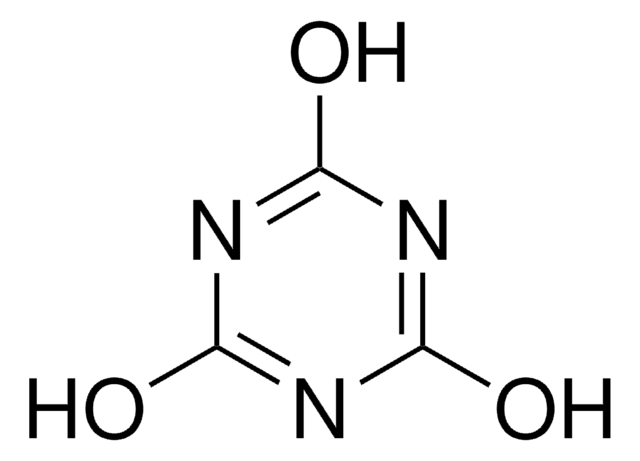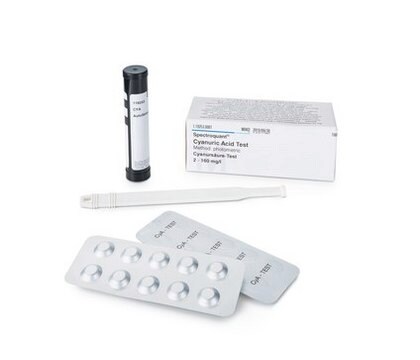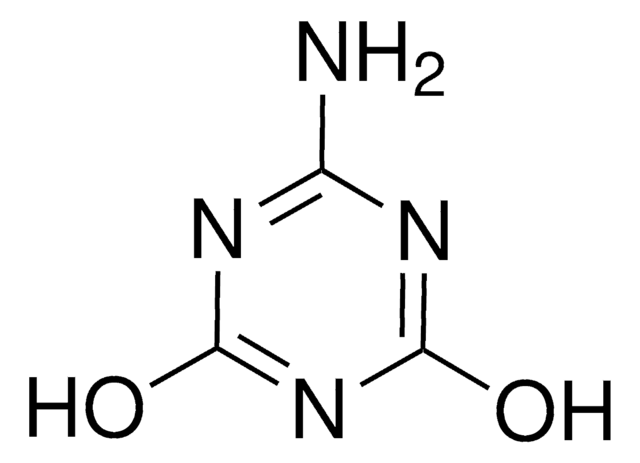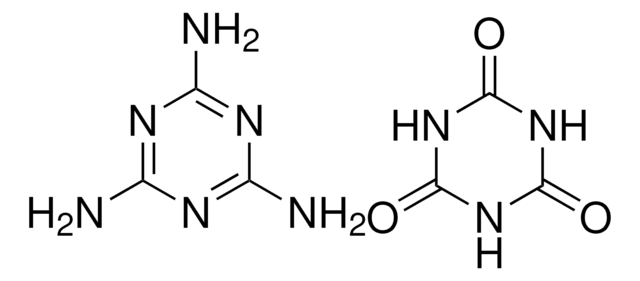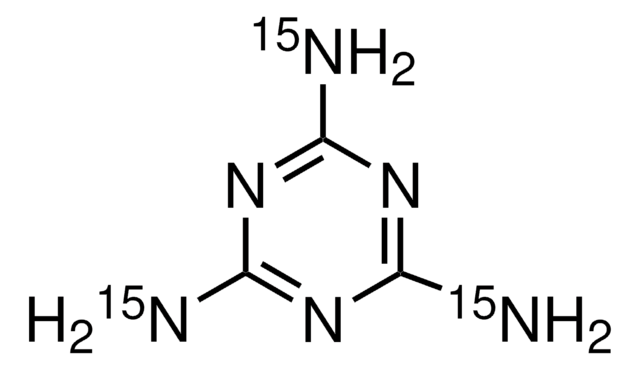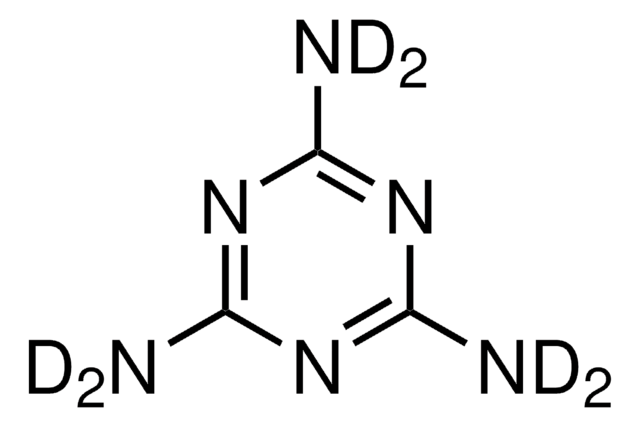16614
Cyanuric acid
analytical standard
Synonym(s):
1,3,5-Triazine-2,4,6-triol, 2,4,6-Trihydroxy-1,3,5-triazine
About This Item
Recommended Products
grade
analytical standard
Quality Level
assay
≥98.0% (GC)
shelf life
limited shelf life, expiry date on the label
technique(s)
HPLC: suitable
gas chromatography (GC): suitable
mp
>360 °C (lit.)
application(s)
cleaning products
cosmetics
food and beverages
personal care
format
neat
SMILES string
O=C1NC(=O)NC(=O)N1
InChI
1S/C3H3N3O3/c7-1-4-2(8)6-3(9)5-1/h(H3,4,5,6,7,8,9)
InChI key
ZFSLODLOARCGLH-UHFFFAOYSA-N
Looking for similar products? Visit Product Comparison Guide
General description
Application
- Milk and milk products using gas chromatography with tandem mass spectrometric (GC-MS/MS) detection.
- Human urine samples and infant formula using liquid chromatography coupled to tandem mass spectrometry (LC-MS/MS).
Packaging
Related product
Storage Class
13 - Non Combustible Solids
wgk_germany
WGK 1
flash_point_f
Not applicable
flash_point_c
Not applicable
ppe
dust mask type N95 (US), Eyeshields, Gloves
Choose from one of the most recent versions:
Certificates of Analysis (COA)
Don't see the Right Version?
If you require a particular version, you can look up a specific certificate by the Lot or Batch number.
Already Own This Product?
Find documentation for the products that you have recently purchased in the Document Library.
Customers Also Viewed
Our team of scientists has experience in all areas of research including Life Science, Material Science, Chemical Synthesis, Chromatography, Analytical and many others.
Contact Technical Service